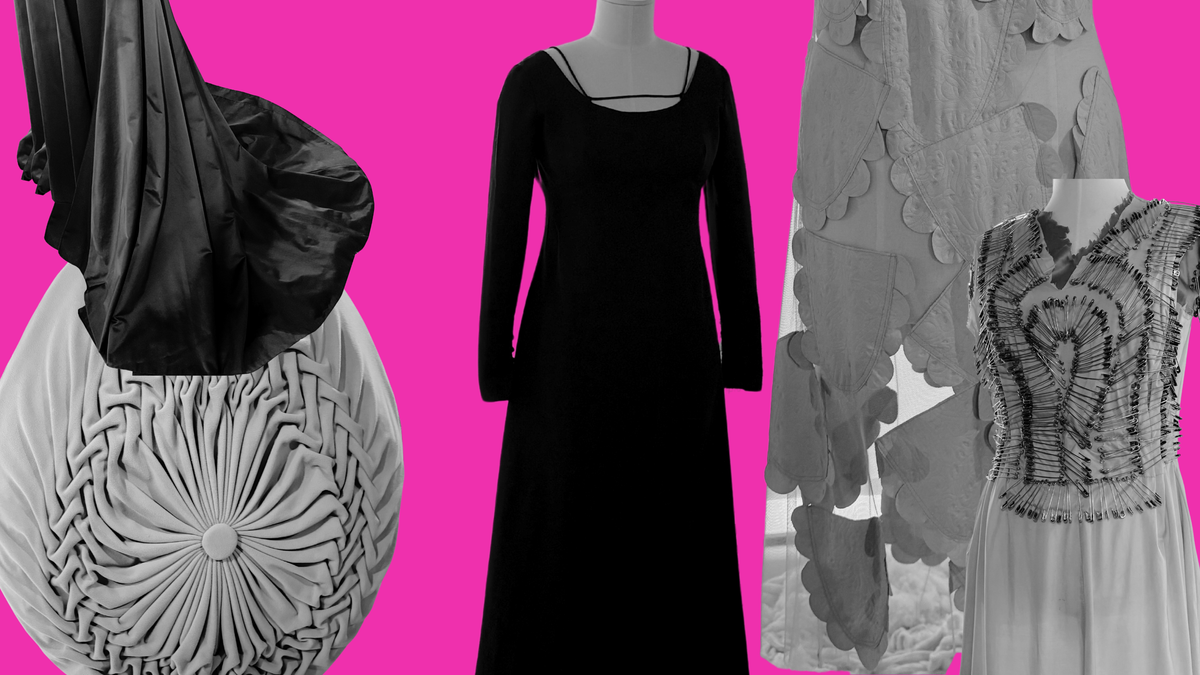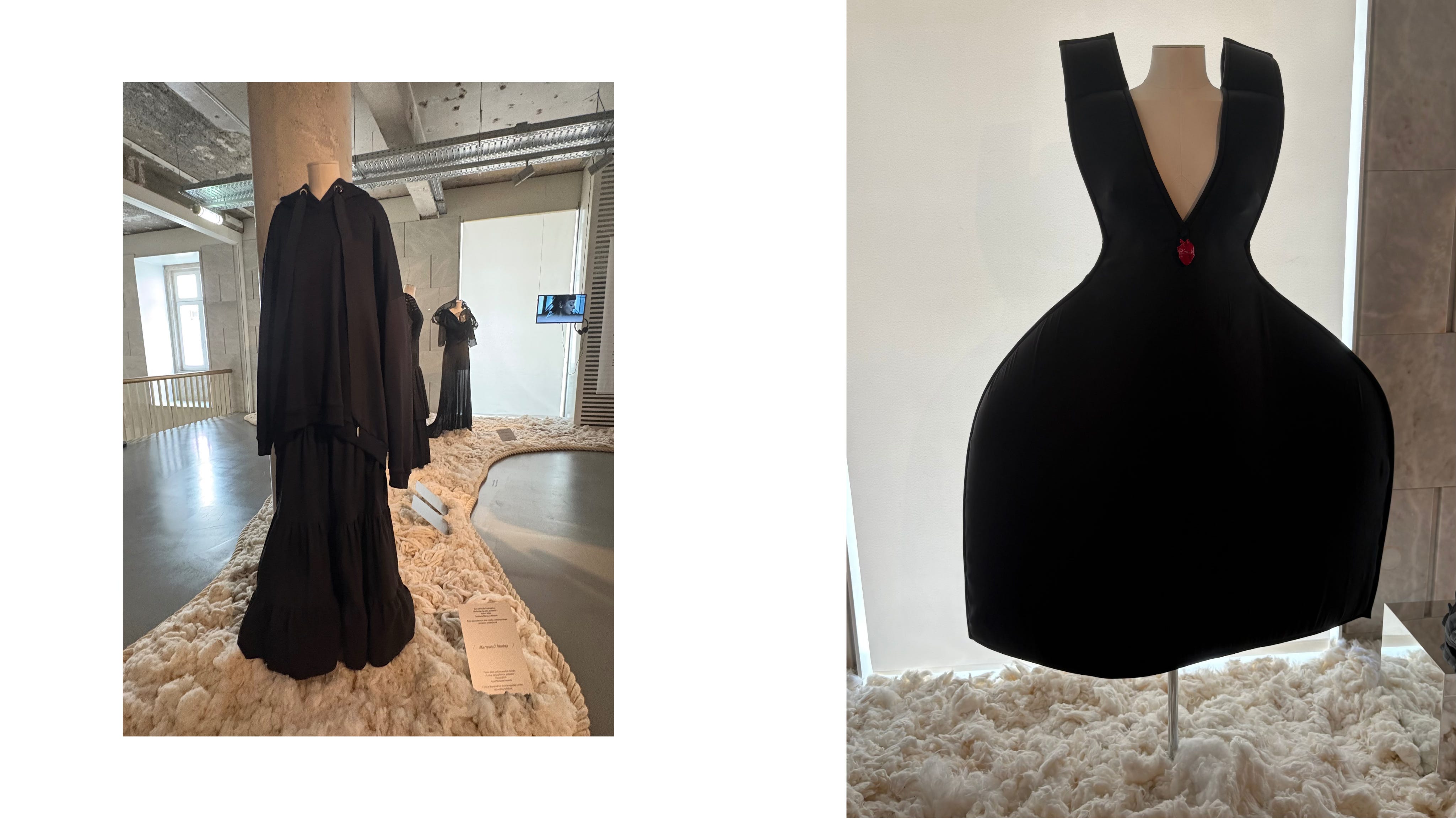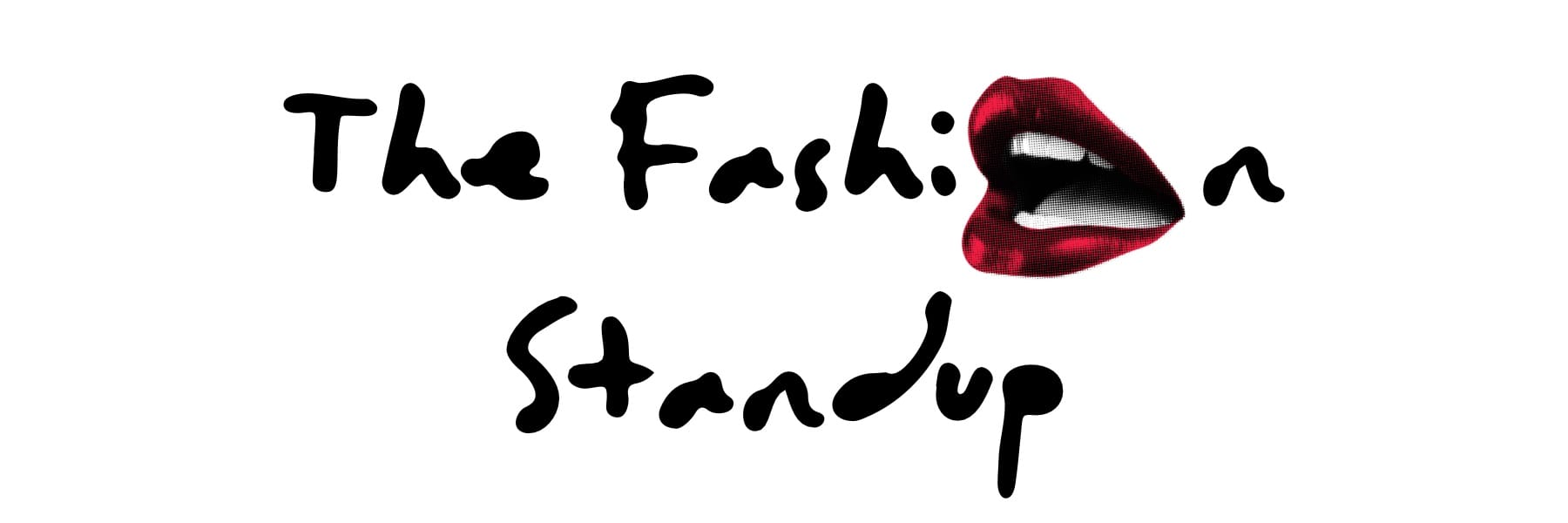Over 50 Years of Portuguese Fashion - "Portugal Pop”

Introduction: The Reality of Portuguese Fashion
No, "it's not just a dream." Portuguese Fashion exists, and I'm not necessarily talking about aesthetics, because we live in a world that's both global and local, where national aesthetics influence each other.
Between Freedom Day (in Portugal, marking the revolution fascist dictatorship) and Labor Day, we're talking about over 50 years of Portuguese Fashion.
In Portugal, we didn't wait for freedom to happen or for it to be a mere transition; we went after it, created it, and grabbed it with both hands. We've been gradually shaping democracy, but the dictatorship ended on that beautiful dawn.
With this spirit of "if it doesn't exist, we create it," resilience and an enormous spirit of freedom drove the creation of a Fashion system in the country of April.
Note: the images do not follow the same sequence as the text, they should be 'read' as an independent narrative.

The "Portugal Pop" Exhibition
"Portugal Pop," an exhibition inaugurated in 2020 at Casa do Design in Matosinhos, now arrives at MUDE - Museum of Design and Fashion. A showcase of more than 50 years of Portuguese Fashion, covering a period from 1970 to 2020 and extending to the present day.
The exhibition sections are formed around Portuguese pop figures - Amália, the great diva, joined by other personalities connected to her: António Variações, Teresa Salgueiro, and Sónia Tavares. Without forgetting the Portuguese artist as globally recognized as Amália herself - Joana Vasconcelos.
The Pioneers: From Dressmakers to Revolution
Amália: The Free Diva
Amália was and is freedom and revolution - despite all the rumors that associated her with PIDE (Portuguese secret police) or claimed she was spied on by PIDE. The truth is that she never needed any signature other than her own to live the life that was hers.

She was her own stylist, her own creative director. An inspiration for many Portuguese creatives.
The Creators Behind the Icon
Maria Theresa Mimoso and Ana Maravilhas were pioneers, not just replicating patterns like other dressmakers - their demanding client Amália Rodrigues gave wings to the creativity of both to go further.

But how could two women have lived through the dictatorship without ending up closing the doors of their ateliers, when today we talk so much about fashion and entrepreneurship?
After Ana Maravilhas' atelier closed, the talented dressmaker Ilda Aleixo (present in her own right in this exhibition) began her journey of co-creation with Amália.
The First Steps of Portuguese Fashion Post-April 25th
Amália's tours in Italy and Japan were being prepared, while in Lisbon, Maçã was opening its doors - Ana Salazar was in Lisbon, leaving behind the free London. Where the versatile António Variações and Manuela Gonçalves had also been. Manuela Gonçalves, a stylist (as our country would refer to fashion designers for decades) had studied at St Martins School and would open Loja Branca, another center of creativity.

After the "hangover" from the Carnation Revolution settled, and before Portugal joined the EEC (European Economic Community), Fashion came to the streets with the “Manobras de Maio” ("May Maneuvers.")
From Individual Creation to National Fashion System
But all of these in the timeline are extraordinary events and not systemic ones. Yes, Ana Salazar was the Mother of the Maçã store, the Harlow brand, and Portuguese Fashion.
Still, Fashion needs a system, and the parents of the Portuguese Fashion System were the duo Abbondanza/Matos Ribeiro. Eduarda Abbondanza and Mário Matos Ribeiro played an immense role due to the creation of ModaLisboa - Lisbon Fashion Week. But also due to the importance they had, and Eduarda Abbondanza continues to have, in fashion education in Portugal.

Although there is only one piece by the duo in the exhibition, the tools they gave to many designers of different generations mean that their influence is indirectly present in many of the pieces exhibited. They never imposed their own style on their students.
The Purpose of the Exhibition
This avalanche of thoughts, ideas, and statements comes mainly from what Bárbara Coutinho, director of MUDE, wrote in the curatorial essay, in which she says the following:

"One of the purposes of this exhibition is to foster debate about Portuguese fashion and consolidate this interpellation in order to evaluate its cultural, economic, and social value, particularly as a strategic factor for the sustainable development of territories and regions and for implementing the emerging changes in fashion design, production, communication, and consumption that have to be thought of on a 'glocal' scale. We did not seek to categorize a Portuguese fashion, as such reasoning can impoverish and reduce a dynamic and plural reality, which it is important to preserve, know, and deepen.”*
The MUDE director also mentions that changes in Fashion and its entire ecosystem should be carried out as a people, as a collective, and not just viewed as the responsibility of fashion professionals, since consumers are part of the system.
My Personal Experience
I've been speaking mainly based on the exhibition catalog because for me it's a tool that gives continuity to the experience. I was so focused on seeing and understanding each piece that the written part wasn't a focus... trusting that in the catalog I could study every detail beyond the author that wasn't on the piece itself. Hence it's a small - big disappointment that this document hasn't been updated with the reconfiguration of the exhibition in another physical and chronological space.

At the time of the exhibition, I didn't think about how I would construct this text; I was thirsty to create my own archive of images of each of those pieces so that I could gradually share them with you. My whole body worked toward that, which is to say, it was the closest a nerd like me has come to an intense gym workout. I tried to manage the hour and something that I had, so, already knowing and having seen the music videos, I didn't watch them again.
It's important to normalize that an exhibition is an experience that should be lived with free will and through personal choices... In other words, you go to museums, you don't have to sit looking at each painting for half an hour.
Beyond the physical exhaustion, it was an emotional moment - good emotions are harder to put into writing without being tremendously porous. The time I devoted to observing and studying the pieces I placed in Image 2 bordered on obsession.
The Exhibition Sections and Designers Present

So, let's talk about facts from the exhibition. How were the exhibition sections designated beyond the inspiration in pop figures from our culture? Which designers were present?
The exhibition is a triptych, composed of three parts:
1. "Collective Memory and National Identity" (pop figures: Amália Rodrigues, António Variações, and Heróis do Mar)
2. "Personal Territories: Intersubjectivity in the 1st Person Singular" (pop figures: Doce, Joana Vasconcelos, The Gift, and Teresa Salgueiro)
3. "Eco-logical: Anthropology of Places, Materials, and Knowledge" (pop figures: Conan Osíris and Claudia Pascoal)

Recognizing the importance of dressmakers Maria Thereza Mimoso, Ana Maravilhas, and Ilda Aleixo, as well as costume designers Pinto de Campos and José Manuel Costa Reis, let's focus on the fashion designers. These were the designers/brands, in an approximate sequence to that presented in "Portugal Pop":
- Alexandra Moura
- Luís Buchinho
- Nuno Gama
- Nuno Baltazar
- Marques' Almeida
- Storytailors
- José Carlos
- Anabela Baldaque
- Filipe Faísca
- Olga Rego
- José António Tenente
- Felipe Oliveira Baptista for Kenzo
- Helena Cardoso
- Maria Gambina
- Ana Salazar
- Manuela Gonçalves
- Abbondanza/Matos Ribeiro
- Dino Alves
- Osvaldo Martins
- Filipe Augusto
- Béhen
- Miguel Flor
- Lidja Kolovrat
- Elementum
- Pé de Chumbo
- Paulo Cravo and Nuno Baltazar
- José Tomé and Francisco Ponte
- Luís Carvalho
- Alves/Gonçalves
- Constança Entrudo
- António Castro
Chronology: Half a Century in Portugal
Since 1970, everything has happened in this country. I'll try to summarize what I've heard told, what I've read, and what I remember (which is already something). It's something like this...
A revolution; democracy was born; we had a woman as prime minister; the small plane carrying the prime minister crashed; RTP began producing soap operas; António Variações died; we joined the EEC(European Economic Community)...
The first independent Fashion Week in the world was created; we had EXPO '98 and that space was returned to the city; Lisbon stopped to say goodbye to Amália and two years later to witness the fact that she was the first woman to receive national pantheon honors...

We started using the Euro; then came Euro 2004; a Portuguese PC for children at affordable prices was produced - the Magalhães; politics went round and round and round again; the troika came and help from the IMF; we had the position of deputy prime minister for the first time...
In 2015, the PS and António Costa created the "geringonça" - an unprecedented governing solution; we won Euro 2016 and Eurovision 2017; António Guterres, former Portuguese prime minister, was elected UN Secretary-General...

We went through the global pandemic; we had World Youth Day; the event that aimed to be the Fashion Week of northern Portugal, born years after ModaLisboa, becomes inactive due to improper management of funds; António Costa submits his resignation as prime minister so that the suspicions hanging over him can be clarified...
We had elections on one of the ModaLisboa days, the freest place and where I felt safest realizing that the far-right was rising in the vote count, but fortunately this party didn't get to govern... But it's present in Parliament disrespecting inclusion and diversity daily...
After the last socialist government didn't reach half of the 4 years it should have governed, the social democrat Luís Montenegro won the race, in terms of directly elected governments - 11 months...

Months in which the country literally shook quite a few times...
Portuguese designer Miguel Castro Freitas was appointed creative director of Mugler...
Conclusion: The Resistance of Portuguese Fashion
Despite all this, without forgetting the pre-apocalyptic Monday...
Whatever happens, Portuguese Fashion, intergenerational, fearless, resilient, and rebellious, is here and will continue!

Thank you for being there, I missed you during the blackout!
With love,
Vera Lúcia
Thanks for reading The Fashion Standup! Subscribe for free to receive new posts and support my work.
*free translation
Image credits:
Collage and photos by the author.
Visual 1
Nuno Baltazar - Sophia Long Skirt (Denim; cotton; polyester) Collection "Mar de Sophia" Fall/Winter 2014/2015 MUDE.M.1035 / Nuno Baltazar Collection | Donation by Nuno Baltazar, 2019.
Filipe Faísca - Padded Tunic with reference to traditional decorative round cushions (Neoprene, polyester, bone manipulation) Collection "Luto" Spring/Summer 2013 Tiago Ferreira Collection | Courtesy of Filipe Faísca.
Abbondanza/Matos Ribeiro - Dress (Silk shantung) 1994 | Courtesy of Teresa Salgueiro. Worn by Teresa Salgueiro during Madredeus' tour of Japan in 1994.
Alexandra Moura - Holy Petals Dress (Tulle, textured synthetic leather) Collection "O Milagre das Rosas" Spring/Summer 2016 | Courtesy of Alexandra Moura.
Dino Alves - Dress (Taffeta, polyester, metal pins) Collection "Trash Couture" Fall/Winter 2001/2002 | Courtesy of Dino Alves.
Visual 2
Abbondanza/Matos Ribeiro - Dress (Silk shantung) 1994 | Courtesy of Teresa Salgueiro. Worn by Teresa Salgueiro during Madredeus' tour of Japan in 1994.
Ilda Aleixo - Dress and cape (Silk georgette) 1967-1968 FAR-VP0003 | Courtesy of Amália Rodrigues Foundation. Amália Rodrigues wore this dress and cape at various performances. One of the shows where the fado singer appeared in this outfit took place in Tiel, Netherlands, in 1988.
Visual 3
Béhen - New Delhi Look Outfit. Coat (Made from an old Portuguese velvet bedspread and faux fur from an upcycled second-hand coat); Pants (Made from an old Portuguese bedspread, eyelets, satin ribbon) Collection "Quero-te Muito" Fall/Winter 2021/2022. MUDE.M.1565
Filipe Augusto - Outfit: Sweater; Coat; Pants; Vest; Hood; Gloves; Pocket square (Wool, knit, plastic, plaid, cotton, basketry, rubber, cotton cambric) Collection "Colheitas" Fall/Winter 2018/2019. MUDE.M.0874.
Outfit: Shirt; Pants; Skirt and waist bag; Scarf; Gloves. (Cotton taffeta, nylon, plasticized cotton, cotton cambric, rubber) Collection "Colheitas" Fall/Winter 2018/2019. MUDE.M.0875.565.
Visual 4
Dino Alves - Dress (Taffeta, polyester, metal pins) Collection "Trash Couture" Fall/Winter 2001/2002 | Courtesy of Dino Alves.
Alexandra Moura - Joana Vasconcelos Cloak Dress (Nylon, polyester) Amparo Coat (Viscose, polyester, elastane) Collection "Heirloom" Spring/Summer 2019. Worn by Joana Vasconcelos at the opening of the "Branco Luz" exhibition at Le Bon Marché Rive Gauche, Paris in 2019 - Designed for Joana Vasconcelos | Courtesy of Joana Vasconcelos.
Visual 5
Nuno Gama - Embroidered Coat with original Nuno Gama motifs (Wool, sequins, beads, gold thread embroidery with chain stitch, flower-foot stitch, satin stitch, fancy stitch, and knot stitch). Aliança Artesanal Cooperative | Collection "Pensamento," Spring/Summer 2021 | Courtesy of Nuno Gama.
Luís Buchinho - Jumpsuit 6MC01314 (Polyester, printed); Dress 6SE VE011213 (Polyester, printed, leather) Fall/Winter 2013/2014 | Courtesy of Luís Buchinho.
Visual 6
Constança Entrudo - Outfit: Sweater (Recycled polyester threads, printed); Pants (Cotton, recycled polyester threads, printed). Collection "The World We Live In: Part II" Fall/Winter 2021 | Courtesy of Constança Entrudo.
Ana Salazar - Dress (Cotton, pleated, crochet). Spring/Summer 2007. MUDE.M.0707.
Visual 7
Alexandra Moura - Blanket Coat (Papa Blanket, wool). Collection "WoMan" Fall/Winter 2016/2017 | Courtesy of Alexandra Moura.
Luis Buchinho - Coat ICS010506 and Skirt 35A010506 (Wool, acrylic, polyamide, polyester, viscose). Collection "In Bloom" Fall/Winter 2005/2006 | Courtesy of Luís Buchinho.
Visual 8
(left) - Ana Salazar - Dress and slip "Meninas na Praia" (Silk taffeta, silk muslin, cutouts, appliqués) Collection "Meninas na Praia: Verão = Été = Summer 1988" Spring/Summer 1988. MUDE.M.0701.
Manuela Gonçalves - Loja Branca. Poncho Dress (Printed cotton), 1978. MUDE.M.0416 / Francisco Capelo Collection.
Loja Branca Manuela Gonçalves - Loja Branca. Dress (Taffeta, silk, mother-of-pearl), 1991. MUDE.M.0423 / Francisco Capelo Collection.
(right) - Ana Salazar - Dress and slip "Meninas na Praia" (Silk taffeta, silk muslin, cutouts, appliqués) Collection "Meninas na Praia: Verão = Été = Summer 1988" Spring/Summer 1988. MUDE.M.0701.
Visual 9
Dino Alves - Dress (Satin cotton, elastane, linen). Collection "Salvé & Cor!" Fall/Winter 2015/2016. Courtesy of Dino Alves.
Nuno Baltazar - Pilar Dress (Crepon, application of medals with the image of Our Lady of Fátima). Nuno Baltazar - Collection "Transverse". MUDE.M.1744 | Nuno Baltazar Collection. Donation by Nuno Baltazar, 2024.
Visual 10
(left) - from left to right and top to bottom: José Carlos - Drawing by Paulo Correia for José Carlos (Pencil, watercolor, India ink) Sketchbook from the Collection "Lisboa, Hábitos e Tradições," 1994 Courtesy of Miguel Mantero.
José Manuel Costa Reis (India ink, watercolor and gouache on Canson paper) Costumes for "Lisboa regressa ao Parque," Teatro Maria Vitória. Dated and signed by the author, 2002 | Courtesy of José Manuel Costa Reis.
(right) - Storytailors - Dress (Silk jacquard, tulle, whalebone), 2008. Courtesy of Sónia Tavares.
Visual 11
Alexandra Moura - A.M Dress (Lycra, original print) Putter AM Coat (Waterproof fabric with mallard duck feather filling - recycled).
José António Tenente - Cape, vest and skirt Alentejo Cape (Artificial fiber twill, stitched and quilted), 2000. MNT Inv. n.° 35113/1/2/3 / Courtesy of National Costume Museum.
Visual 12
(left) - Pierre Cardin - Coat Creation Pierre Cardin, Paris (Checkered taffeta, leather). Courtesy of Leandro Pinto. (worn by António Variações).
António Variações. Coat and pants (Printed cotton canvas), 1980s. Courtesy of Teresa Couto Pinto | Worn by António Variações.
(right) - Twiga Balandrau (Cotton, printed), 1980-1990. Courtesy of Amália Rodrigues Foundation.
Visual 13
Marques' Almeida - Skirt and Asymmetric Hoodie (Cotton fleece, polyester) Resort 2019 | Courtesy of Marques' Almeida.
Kolovrat - Dress (Silk, sponge, viscose) Collection "Meu Portugal - Igualmente Nostálgico." Spring/Summer 2024. Courtesy of Lidija Kolovrat.
Visual 14
Luis Carvalho - Custom-made Coat and Pants for the first semifinal of the Eurovision Festival (Silk taffeta) 2019. Courtesy of RTP - Rádio e Televisão de Portugal.
Alexandra Moura - "Não é sonho nenhum" Blazer (Wool, with reproduced quote from ceramic artist Rosa Ramalho); Rosa Dress (Cotton flannel, jacquard reminiscent of traditional plaid representing a more "rural, dry and rugged" universe); Rosa Ramalho Scarf (Cotton) Collection "Bestiário" Fall/Winter 2019/2020 | Courtesy of Alexandra Moura.
